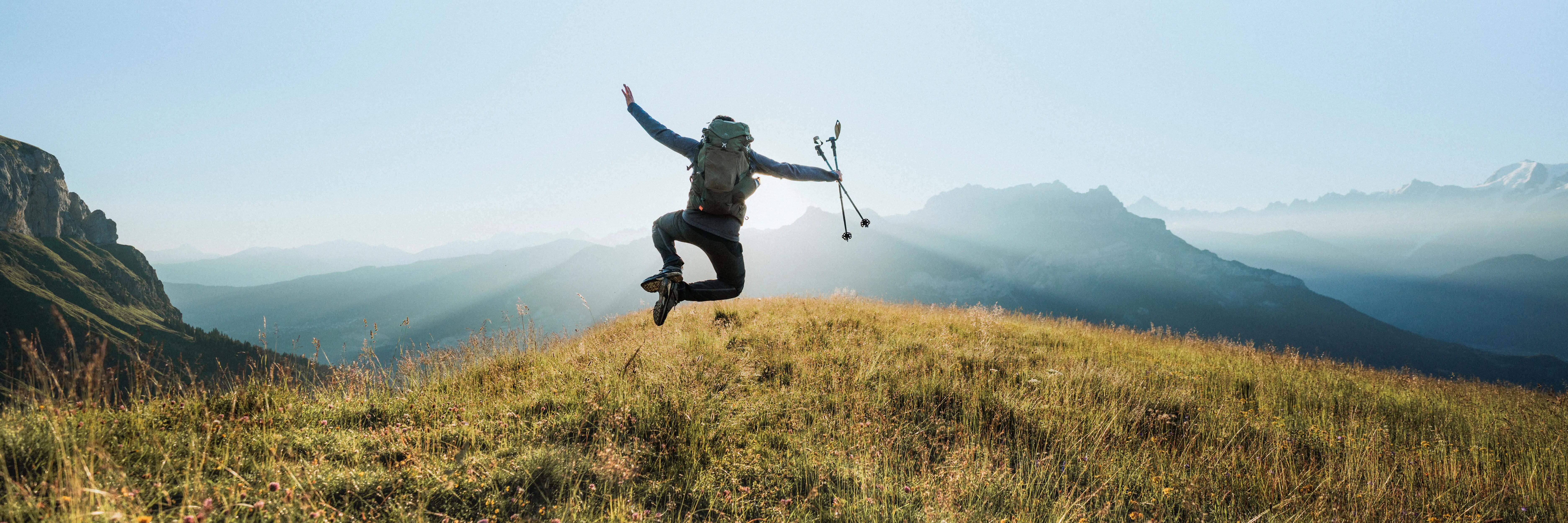
Are you ready to go hiking again?
The return of spring goes hand in hand with a return to hiking! Here are 3 pieces of advice to ensure you get off on the right foot!
-
Warm up properly
Warming up is a stage that mustn't be overlooked, even when it comes to hiking.
Its purpose?
To gently wake up the body, prepare your joints, muscles and breathing and improve your blood circulation.This means that your body is prepared and there's less chance of injury.
The length of the warm-up session depends on how energetic you're going to be.It can vary from 5 minutes to several tens of minutes, depending on the intensity of your hike.You can begin by walking at a slow pace, followed by a few exercises to work the parts of the body you're going to be using: ankles, calves, knees, back, shoulders and neck.
The same is true when it comes to stretching at the end of your hike.Stretching helps soften the muscles and reduces post-exercise aches and pains! -
A trail suitable for a return to hiking
Often, when you take up exercise again, you need a little time to adapt!The choice of route for your first excursion depends on your level of physical activity over the winter. If you made the most of the snowy weather to go snowshoeing, ski-touring or cross-country skiing, you can choose a route which is similar in length and altitude change to the trails you completed in winter.
However, if you've spent the winter hibernating, we recommend that you start slowly.When you stop exercising for a while, your physical condition will decline.In order to stay motivated and avoid injury, it's best to start again slowly.So forget about the last hike you did last summer or your usual points of reference and consider an easier route.
To avoid any unpleasant surprises, it's best to choose a low altitude hike so that you don't find yourself trapped by snow along the way. -
Proper clothing
In Spring, the weather is still very variable. It may be warm, cold or humid, all in the course of one day. To help you adapt to these changes in temperature, we recommend the following outfit:
HIKING CLOTHING
- a breathable long-sleeved base layer
- a fleece, to provide warmth
- a waterproof, compact, lightweight jacket that will protect you from the rain
- comfortable, lightweight, quick-drying trousers
- waterproof shoes
The upper body 3 layering system helps you deal with the challenges of unpredictable weather and allows you to adapt your clothing to match the intensity of effort. When walking uphill, or when it's hot, your fleece will be in your backpack. Conversely, when you stop for a break or if it's cool, you'll be grateful for your warm hiking layers!
- Cloé
Hiking lover at Quechua